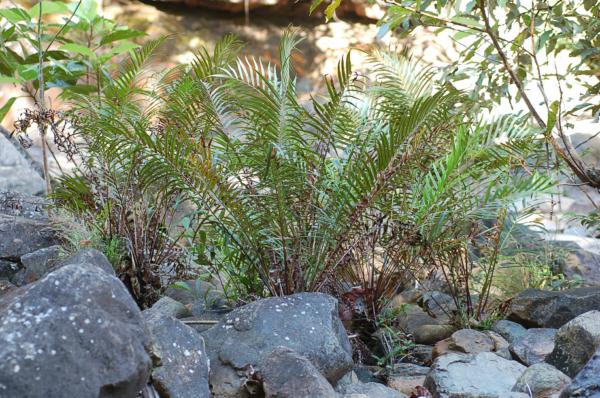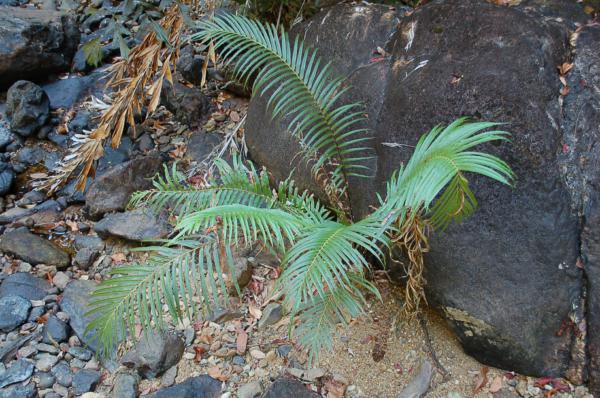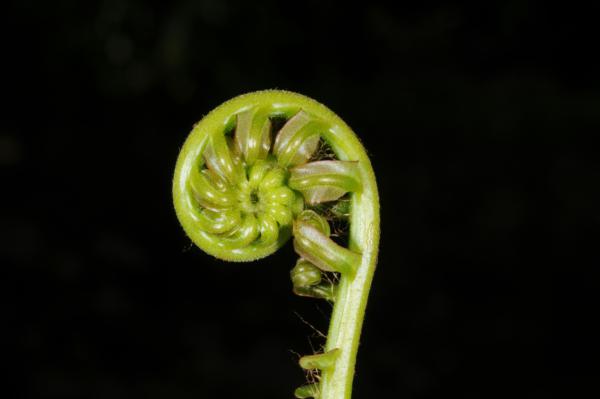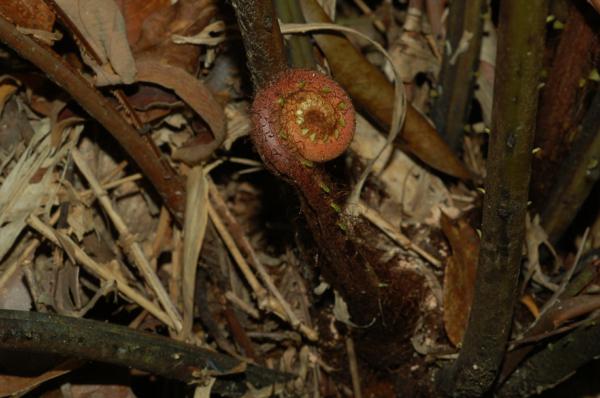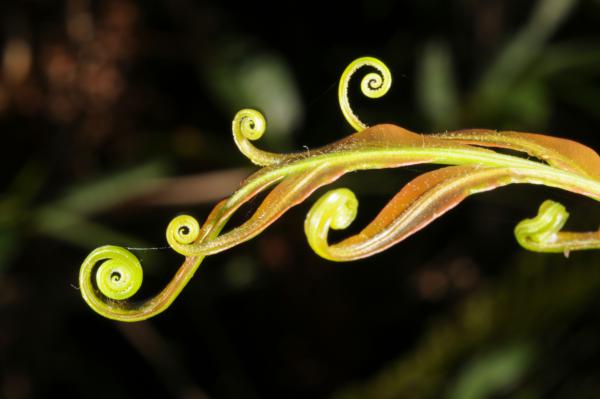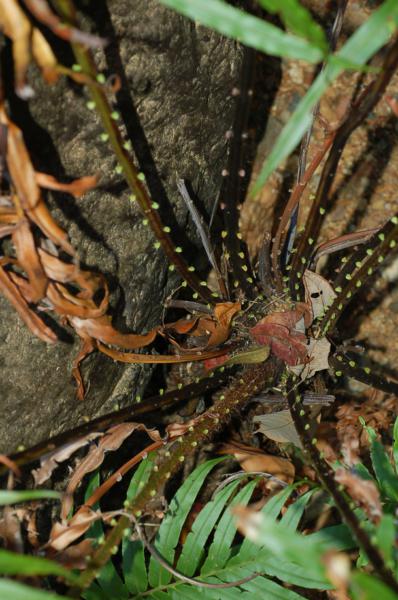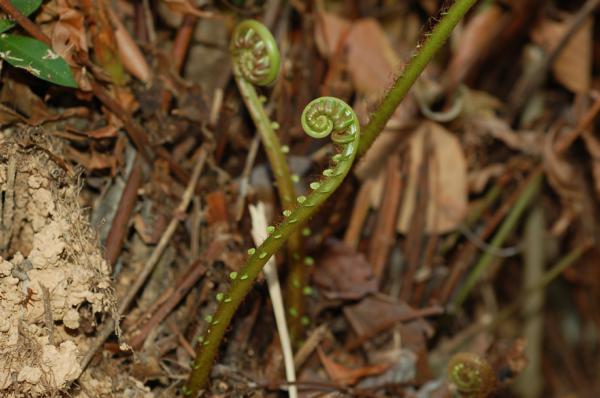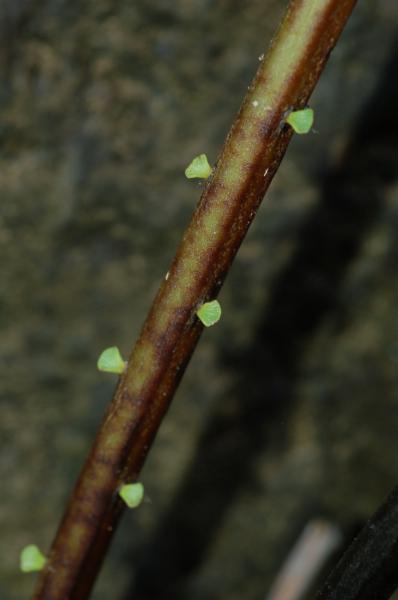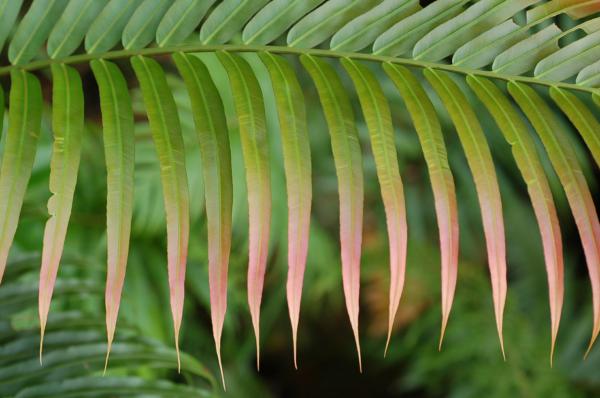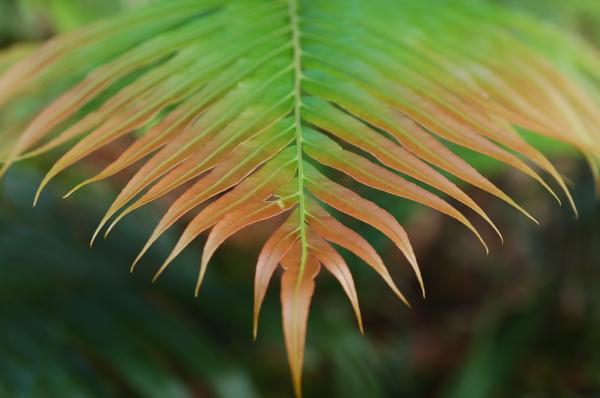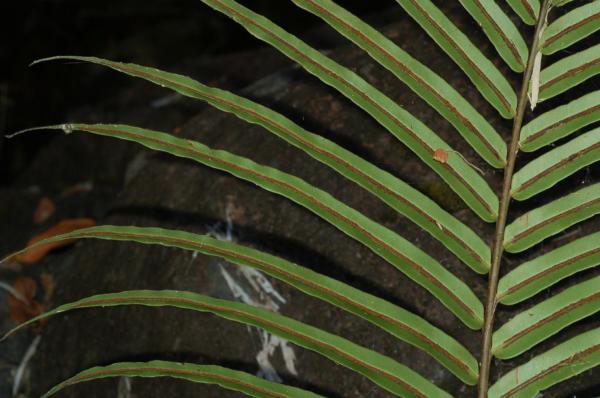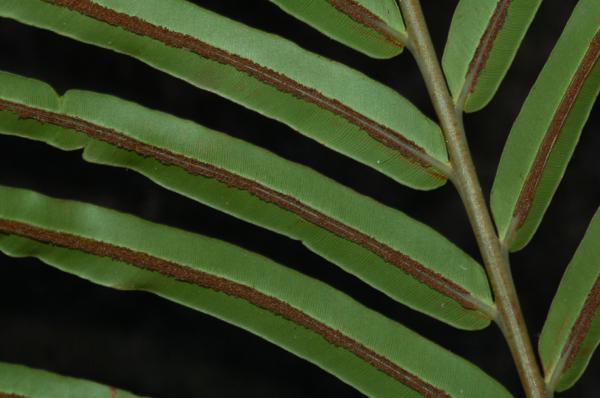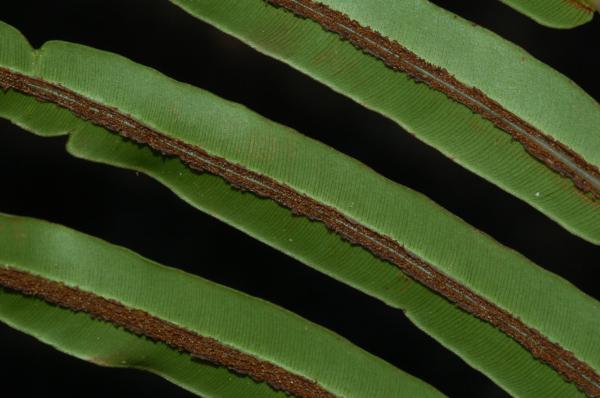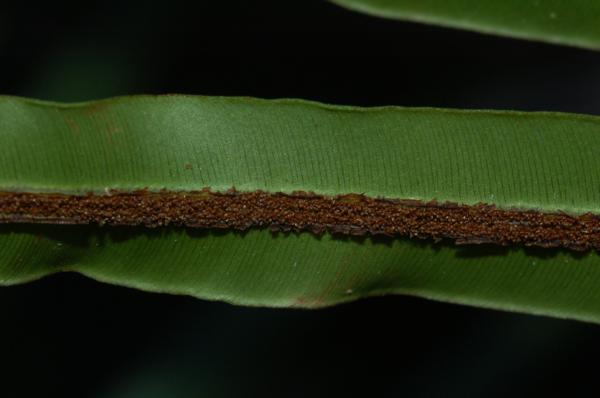
Blechnum orientale L.
Family
Blechnaceae
Nomenclature
Blechnum orientale L., Sp. Pl. 1077. 1753; Bedd., Handb. Ferns Brit. India: 132, f. 66. 1883; Christ, Bot. Tidsskr. 24: 107. 1901; C.Chr., Bot. Tidsskr. 32: 346. 1916; C.Chr., Contr. U.S. Natl. Herb. 26: 333. 1931; Tardieu & C.Chr., Fl. Indo-Chine 7(2): 207, f. 26.1 & 26.2 1940; Holttum, Rev. Fl. Malaya ed. 1, 2: 446, f. 262. 1955 [‘1954’]; Holttum, Dansk Bot. Ark. 20: 29. 1961; Seidenf., Nat. Hist. Bull. Siam Soc. 19: 87. 1958; Tagawa & K.Iwats., SouthE. Asian Stud. 3(3): 84. 1965; Tagawa & K.Iwats., SouthE. Asian Stud. 5: 88. 1967; Tagawa & K.Iwats., Fl. Thailand 3: 298. 1988; Boonkerd & Pollawatn, Pterid. Thailand: 146, 180. 2000; Dy Phon, Dictionary of Plants used in Cambodia: 95. 2000; Newman et al., Checkl. Vasc. Pl. Lao PDR: 25. 2007.
Description
Terrestrial. Rhizome thick, ascending or suberect, densely covered with scales; scales linear, gradually narrowing towards apex, 2 cm or more long, up to 2 mm broad, tailed at apex, dark brown with pale cartilaginous edges which sometimes becoming uneven. Stipes stout, stramineous, or sometimes purplish when young, up to 60 cm long, densely scaly at base, bearing small auricles (reduced pinnae) throughout. Laminae up to 2 m long, to 60 cm wide. Lateral pinnae many in number, close, 2–3 cm apart from each other, ascending, linear, gradually narrowing towards long-tailed apex, round or subtruncate at sessile base, or decurrent at posterior base and adnate in the upper ones, entire, 30 by 1.2–2 cm; veins simple or forked usually near costa, distinct on both surfaces, very close, up to 0.5 mm apart; coriaceous, green, glabrous throughout. Sori narrow, long-continuous along costa; indusia narrow, usually broken before maturity.
Distribution in Thailand
NORTHERN: Chiang Mai, Chiang Rai, Nan, Tak; NORTH-EASTERN: Loei, Udon Thani, Nong Khai; EASTERN: Chaiyaphum; SOUTH-WESTERN: Phetchaburi; CENTRAL: Nakhon Nayok; SOUTH-EASTERN: Chanthaburi, Trat; PENINSULAR: Chumphon, Ranong, Surat Thani, Phangnga, Nakhon Si Thammarat, Trang, Satun, Yala, Narathiwat.
Distribution in Laos
Attapeu, Khammouane, Luang Phrabang, Sayabouli, Vientiane.
Distribution in Cambodia
Kampot, Koh Kong.
Wider Distribution
Tropics of Asia, Australia and the Pacific, India.to Polynesia, north to southern edge of Japan (Yakushima).
Ecology
On rather dry open slopes or in light shade at low or medium altitudes throughout Thailand.
Proposed IUCN Conservation Assessment
Least Concern (LC). This species is widespread and not under any known threats.
Notes
This is a common species in the lowlands, variable in size and texture. In shade the plants bear broader, thinner, paler pinnae which are more spaced. The edge of the pinnae is usually inrolled, which is not unusual for plants in shade.
Voucher specimens - Thailand
Middleton et al. 4664, Chanthaburi, Namtok Phlio National Park (E).Voucher specimens - Laos
Maxwell 99-205, Vientiane (CMU).
Voucher specimens - Cambodia
E.Smith 2509A, Kampot, Bokor (P); Long et al. CL506 & CL543, Koh Kong (P).
Habit
Habit
Crozier
Crozier
Unfurling frond
Base of stipes
Unfurling frond showing reduced pinane at base
Very reduced pinnae on stipe
Young pinnae
Young lamina apex
Pinnae
Lower surface of pinnae
Lower surface of pinnae
Sori
Site hosted by the Royal Botanic Garden Edinburgh. Content managed by Stuart Lindsay, Gardens by the Bay, Singapore and David Middleton, Singapore Botanic Gardens. Last updated 24 January 2012
